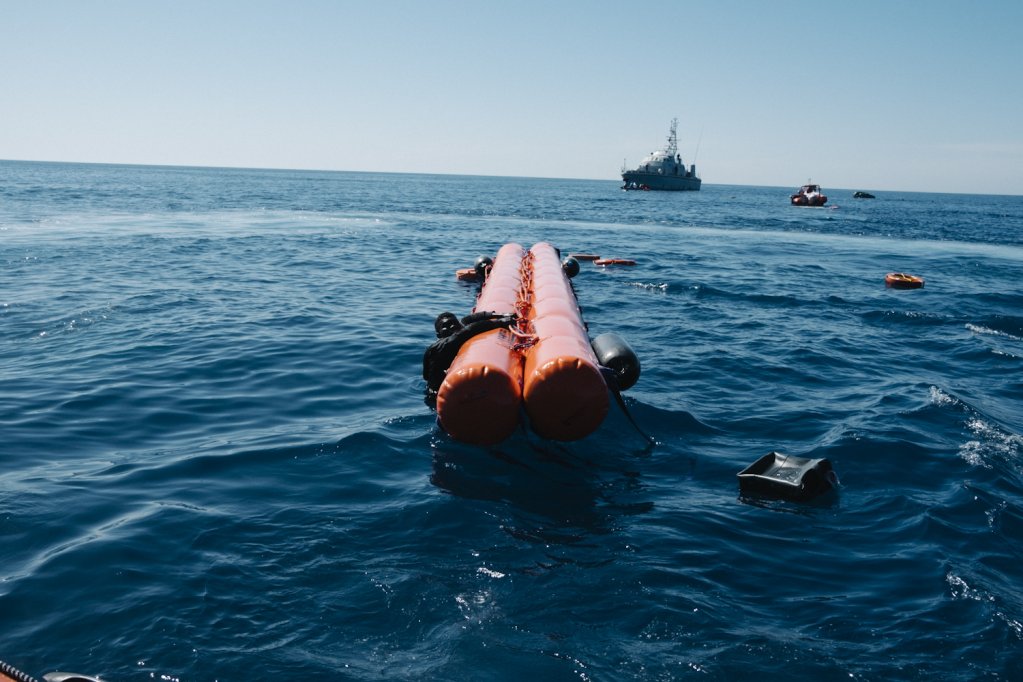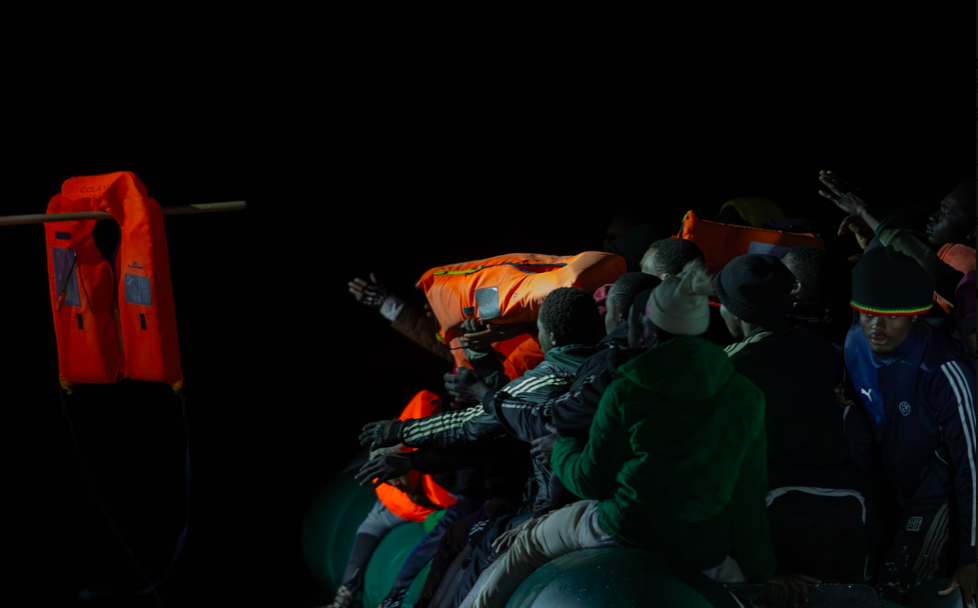Migrants attempting to reach Europe by crossing the Mediterranean Sea depend on smugglers operating on the North African coasts. They promise a safe crossing backed up by “guarantees”. Yet every trip across the sea has its risks; shipwrecks are frequent. This is part 1 of our series, debunking smugglers' claims.
Over 25,000 migrants, including women and children, have drowned since 2014 while crossing the Mediterranean Sea. The overwhelming majority of these victims sought the services of a smuggler to attempt the crossing to European coasts. Each of them likely hoped for the boat to be solid enough, for the motor to be powerful enough, for the “guarantees” offered by the smugglers to be true.
But smugglers frequently “lie about all their services”, according to the non-governmental organization SOS Méditerranée. The humanitarian organization regularly comes to the rescue of migrants in distress, becoming in turn a principal witness to their plight at sea.
InfoMigrants has drawn up a list of the most common lies propagated by human trafficking networks operating in the Mediterranean Sea to debunk them.
This article is part of a two-part series, you can find the second part here.
1.) Italy is not as close as smugglers claim
Smugglers often lie about the proximity of Libya or Tunisia -- major departure points for those preparing to cross the sea -- to Italy.
SOS Méditerranée has heard numerous stories from survivors who reported hearing this lie. “The smugglers convince the [migrants] that the lights shining far away in the sea are the lights of Italian coasts,” said Lucille Guenier, the communications coordinator of SOS Méditerranée. “Yet these are in fact lights from oil rigs [or gas rigs]. It’s impossible to see the Italian coast from that far away.”
The closest Italian island – Lampedusa – is 300 kilometers away from Libya and 100 kilometers away from Sfax, in Tunisia.
2.) The crossing 'package' provides no guarantees, more risks
The smugglers offer various “guarantees” to migrants for a safe arrival to Europe depending on how much they pay. These “guarantees” usually work like packages. “If a crossing costs 500 euros for example, and the migrant wants a guarantee, the price can go up to 1000 euros or even 1500 euros,” said Kassoum, an Ivorian who crossed the Mediterranean in 2024. “This means you can attempt the crossing as many times as you want until you reach Europe.”
“These guarantees don’t work," said SOS Méditerranée. A boat at sea can suffer serious damage, fall apart, sink, or be intercepted by (Libyan or Tunisian) coastguards. With every trip being so risky, anyone attempting to cross the sea in makeshift boats multiple times increases their chance of becoming a shipwreck victim.

3.) Satellite phones don't keep people safe
Migrants are sometimes provided with a satellite phone in their boats. It can be an invaluable tool on the high seas. Once the boat is far away from the coast, there is no signal in international waters, and cell phones have no reception.
Migrants equipped with a satellite phone can call two numbers: the Coast Guard (196) and Alarm Phone (00 33 4 86 51 71 61), a telephone platform that can connect the boat to the authorities.
Read AlsoMigrants rescued from gas platform off Tunisia
Yet in no case can migrants call humanitarian vessels, since they don't have the telephone numbers of the captains of these boats.
"We step in to help boats in distress after being alerted by either Alarm Phone, the Italian Coast Guard or Frontex [the European coastguard agency]. These entities send us the geolocation of the boat. Sometimes it's us that spot the boats, either with binoculars from the Ocean Viking [support vessel] or with aerial surveillance by humanitarian planes like the Sea Bird," said Guenier.

Contrary to what is said on social media, the satellite phones are not provided by the NGOs at sea, but by the smugglers themselves. "We are absolutely never in contact with the traffickers, whether it’s in Libya or anywhere else. Nor are we in contact with the migrants," said the communications coordinator of SOS Méditerranée.
Migrants who can afford a satellite phone must pay more for their crossing, but the device is no guarantee of survival. "Sometimes these phones break down during the crossing when they get wet. Sometimes migrants call for help but no one comes," said Guenier, adding that it is "not uncommon to see these types of phone" in boats during rescue operations.
One boat drifted for seven days at sea in March 2024 before being rescued. "These sub-Saharan migrants [in the boat] had a satellite phone, but it was broken," said Guenier. Over sixty people, including women and children, died of hunger and thirst while onboard. The survivors were rescued by the Ocean Viking. "The migrants with GPS phones often use them to call their families on land, and it’s the families who alert the authorities or Alarm Phone."
4.) NGO boats do not automatically come to rescue migrants
Smugglers frequently reassure migrants by claiming that humanitarian vessels are waiting for them a little further offshore.
This is obviously false. InfoMigrants emphasizes in all its articles that humanitarian vessels only cover a very limited part of the Mediterranean Sea. Their presence is far from a guarantee of rescue for migrants attempting the crossing from the African coast.

Many boats go unnoticed in the vastness of the sea or sink without ever being spotted. The Central Mediterranean route remains one the deadliest overseas routes in the world today.
Approximately 3,500 children have died or gone missing over the past ten years – equal to one per day – while trying to cross the Central Mediterranean between North Africa and Italy, according to a recent UNICEF report.
5.) The boats provided are ‘coffins in the water’
The boats provided by traffickers before crossing the Mediterranean are "of disastrous quality" and "totally unsuitable" for crossings at sea, SOS Méditerranée and other experts have told InfoMigrants.
The boats embarking from Libyan coasts used by smugglers are generally made of plastic. "They are around ten meters long and made out of planks and rubber tubes crudely assembled with nails. They can break or deflate at any moment – the chances of survival are minimal," said Guenier. Other boats made from wood or fiberglass are just as dangerous.
Boats embarking from Tunisian coasts, especially those leaving Sfax since 2023, are characterized by metal plates hastily welded together. Migrants call them "iron boats" or "metal boats".
"They are very unstable, with the weight of the overload, it looks like people are sitting on water. There is obviously a huge risk of capsizing," said Guenier. "All these boats lead to death."
Chris Borowski, the spokesperson for Frontex, described them as "coffins in the water."
You can find the second part of our series debunking lies smugglers tell migrants here.
